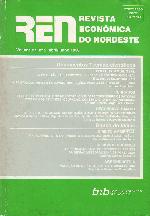CERRADOS DO BRASIL E DO NORDESTE: CONSIDERAÇÕES SOBRE OS FATORES ECOLÓGICOS ATUANTES, OCUPAÇÃO, CONSERVAÇÃO E FITODIVERSIDADE
DOI:
https://doi.org/10.61673/ren.1996.2121Keywords:
Environmental Economics, 'Cerrados', Biodiversity, Phytodiversity, Sustainable Development, Brazil.Abstract
This article presents considerations about the distribution of the Brazilian 'Cerrados', its main ecological factors, flora and floristic pattern, and about its current conditions of conservation and occupation. The woody flora is little known and the taxonomical problems are remarkable, in spite of the great number of species (between 989 and 1,753). A flora that has about 7,000 species, compared to 60,000 of Amazonia and 2,000 of Northeastern Caatinga, cannot be replaced without specific strategies of management and withont preoccupation with its preservation. Ignorance of specific phytodiversity compromises the implantation of models of sustainable development and also any governmental plan, mainly in Northeast, that has one of the most important supercentres of biodiversity, in Brazilian Cerrados. To Change natural environment with the destruction of unvalued speciesis an equivocation. Production, now, must include the maintenance of the biodiversity.








